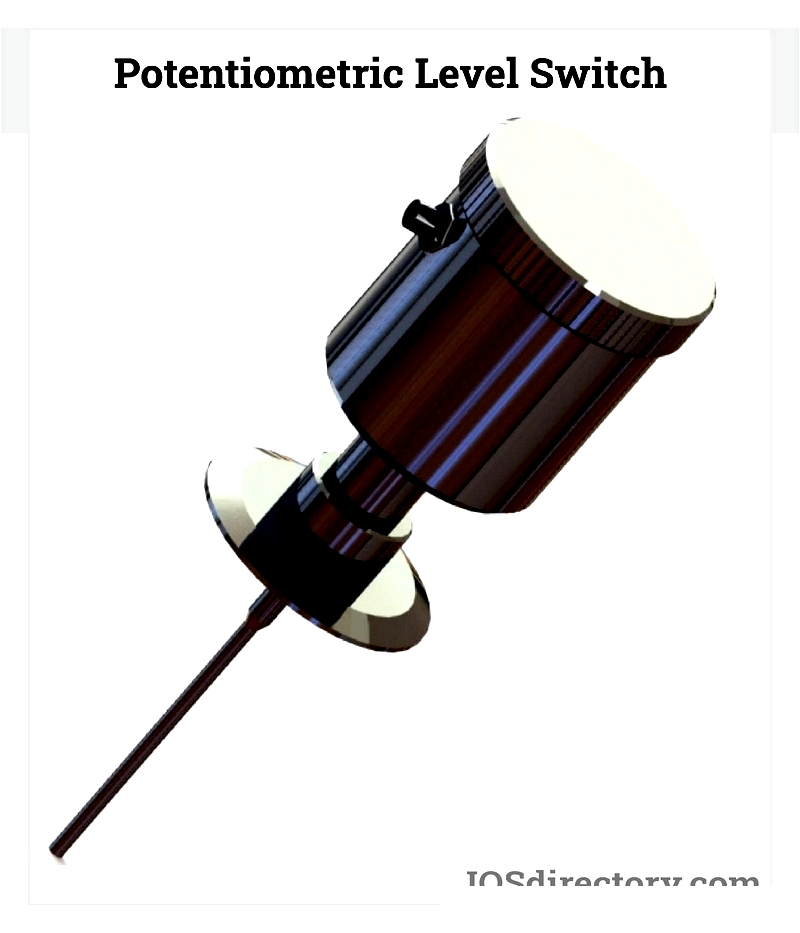Introduction
This article provides an in-depth examination of level switches and their applications.
You will explore key topics including:
- What is a Level Switch
- Applications of Level Switches
- Different Types of Level Switches
- Working Principles of Level Switches
- And more...
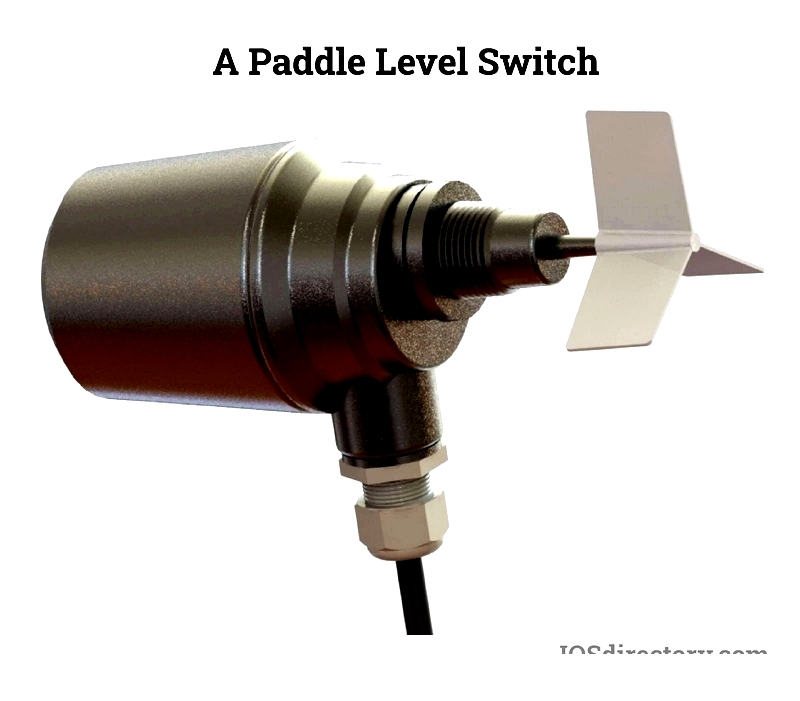
Chapter One – Understanding the Function of a Level Switch
A level switch is an electrical or mechanical device that monitors liquid, powder, or bulk material levels. It triggers an alert when contents reach a predetermined height or depth. When detecting a full tank, the switch signals upper-level detection. Conversely, when levels fall below a set threshold, it indicates low-level or empty status.
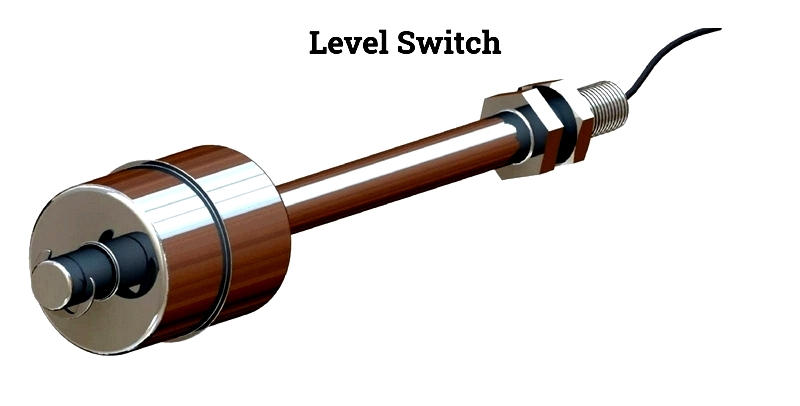
Level switches are crucial in production processes, particularly in extreme environments with high temperatures, pressures, and vibrations. Their versatility allows measurement of various products across different settings. The precision, reliability, and durability of level switches are essential for efficient industrial operations.
Chapter Two – Types of Level Switches
Level switches, also called liquid level sensors or detectors, come in various types for different products and industrial uses. These instruments serve as measurement devices, monitoring controls, or warning alarms—activating or deactivating pumps, valves, or other mechanisms in process automation. They can have mechanical or electrical outputs and be configured as normally open (NO) or normally closed (NC) for industrial control systems.
Common types include inductive, thermal, float, rotating paddle, and ultrasonic switches, typically used in tanks, silos, and storage bins. For fluid measurement and process control, they integrate with valves or pumps to regulate levels, prevent overflows, and maintain operations. Some models are designed for hazardous areas, monitoring flammable liquids or corrosive chemicals with explosion-proof features.
Level switches fall into two categories: point level detectors and continuous level measurement devices. Point level switches detect specific thresholds and include optical sensors, float switches, and ultrasonic models. Continuous level switches, or transmitters, enable real-time monitoring with submersible, radar, ultrasonic, magnetostrictive, and capacitive models. Selection depends on media type (liquid, slurry, powder), tank configuration, environmental conditions, and required output signal (analog or digital) for control systems.
Common user inquiries include:
- Best level switch for water or chemical tanks
- Differences between point and continuous level measurement
- Selecting sensors for corrosive environments
- Comparing float and ultrasonic switches
- Setting up tank overfill alarms
When choosing a level switch, consider liquid/solid type, response time, output options (relay, analog, digital), installation method, and safety certifications for hazardous locations.
Level Switch Types
Capacitive Level Switch
Capacitive switches measure corrosive liquids, high temperatures, and sealed container levels. They operate on capacitance principles, ideal for non-contact detection of aggressive chemicals or viscous media. The electrode's capacitance changes with media level, converting to a signal for automated monitoring.
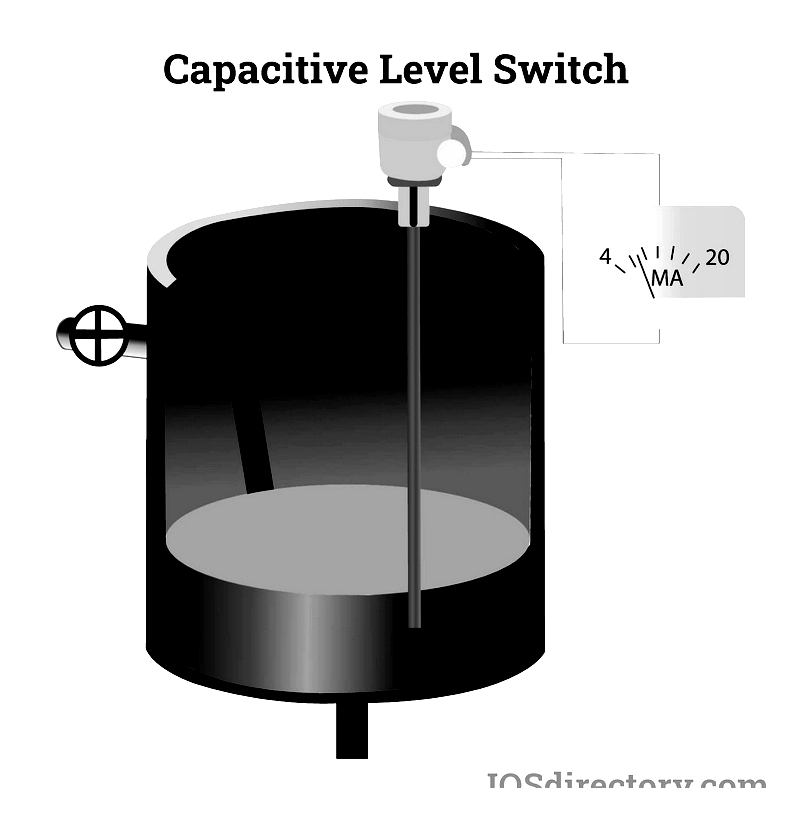
Conductivity Level Switches
These switches use sensitive probes to detect minor liquid level changes. With insulated electrodes, they measure resistance variations between probes, suitable for water-based solutions and wastewater. Some configurations allow tank walls to serve as electrodes.
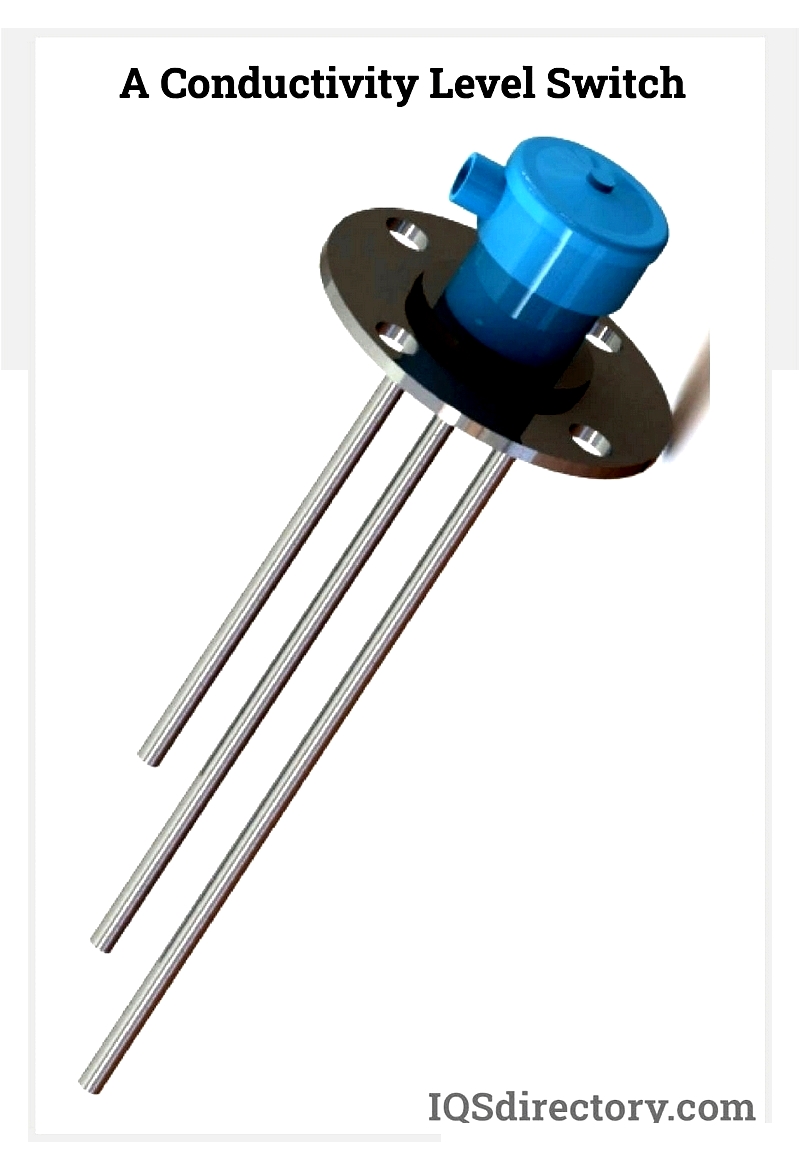
Diaphragm Switch
Diaphragm switches measure pressure changes from rising/falling material levels. Pressure moves the diaphragm to activate a micro switch, widely used in granular storage and silo automation.
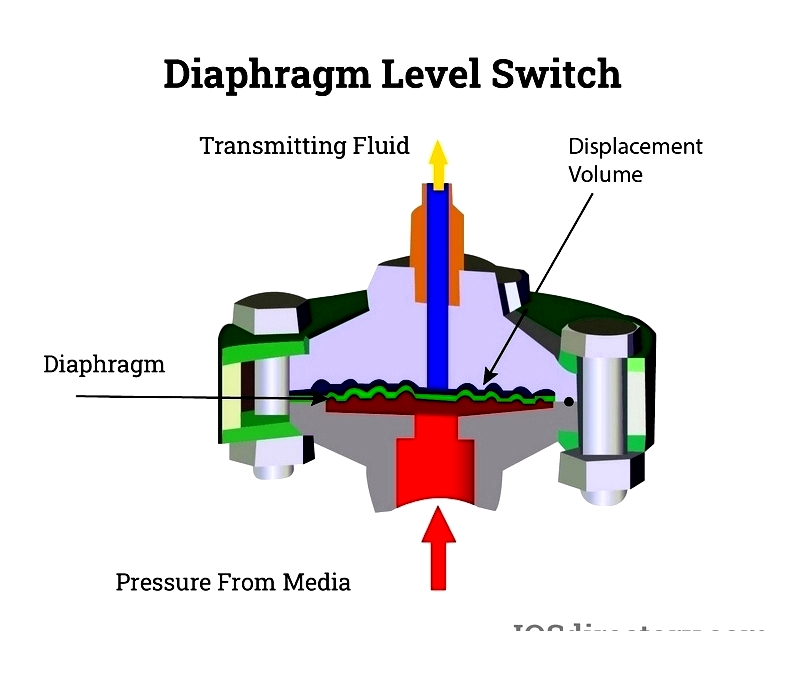
Displacer Level Switch
Designed for high-temperature/pressure environments, these switches use a weighted displacer. Buoyancy changes move a magnet to actuate the switch, ideal for industrial process control.
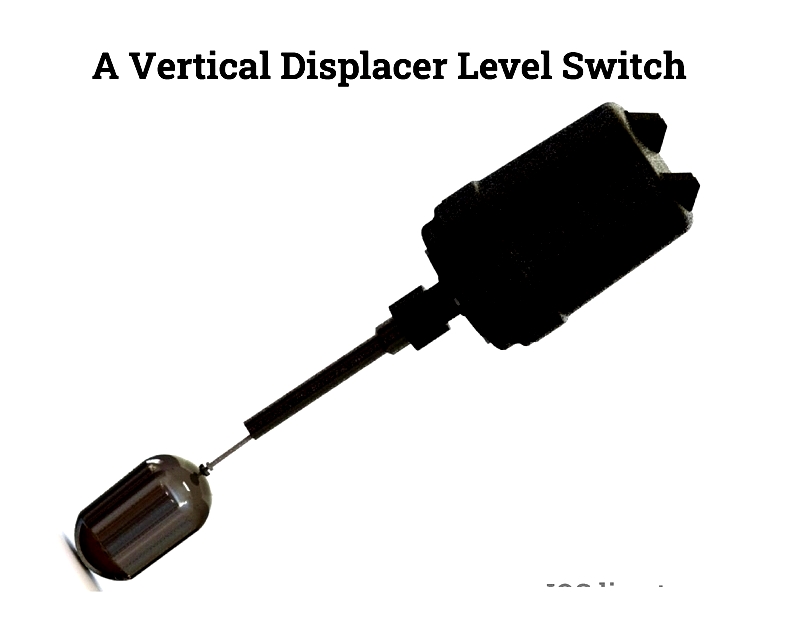
Float Level Switch
A cost-effective mechanical switch that floats on media surfaces. Used with pumps and valves for liquid control in various tanks. The float's movement activates a reed switch for signaling.
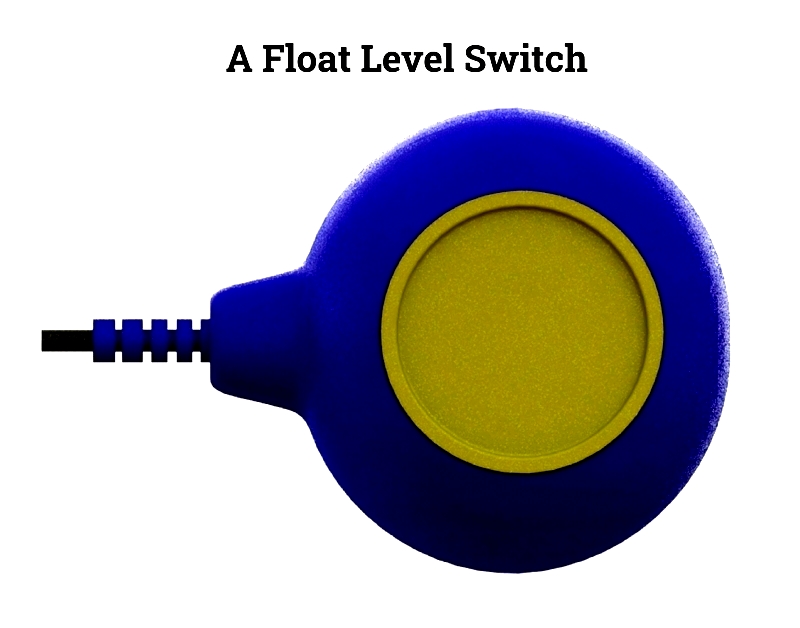
Hydrostatic Level Switches
These measure liquid height via hydrostatic pressure, used in storage tanks and wastewater treatment. Mounted on container sides/bottoms, they withstand harsh environments.
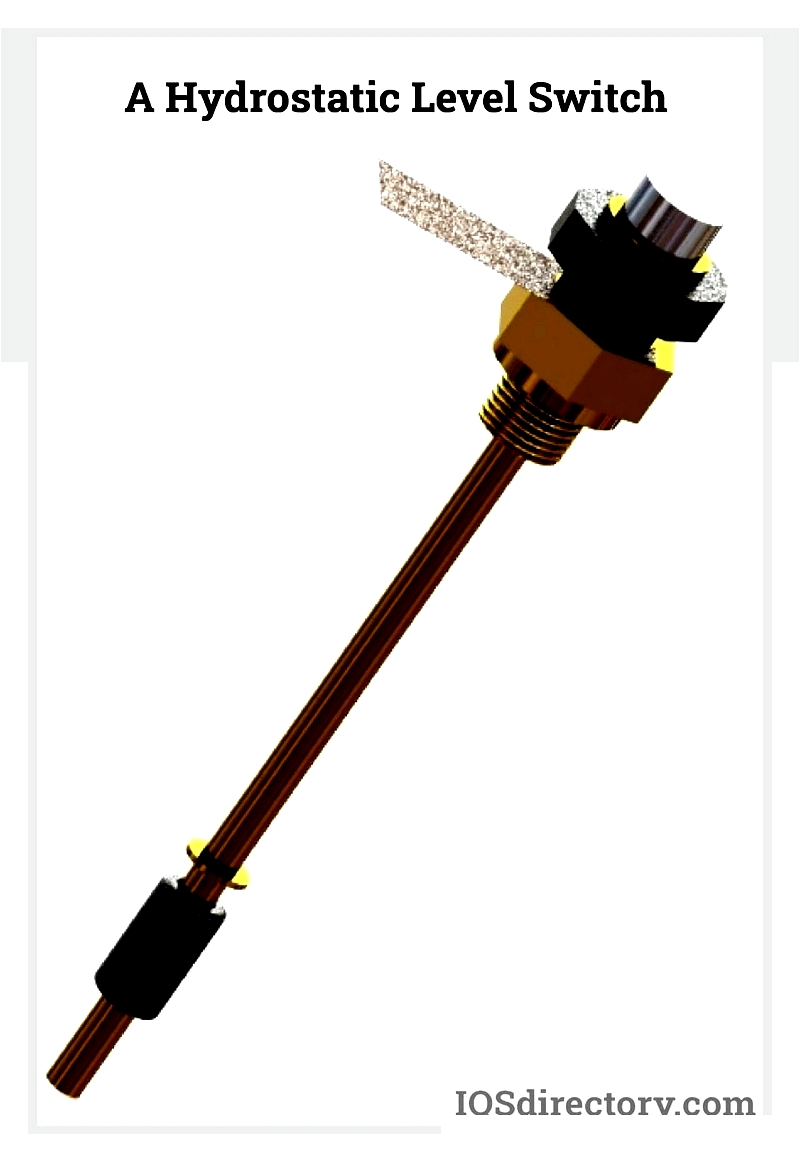
Inductive Level Switches
Non-contact sensors detecting metallic materials through electromagnetic fields. Used in bulk material handling with reliable performance in dusty conditions.
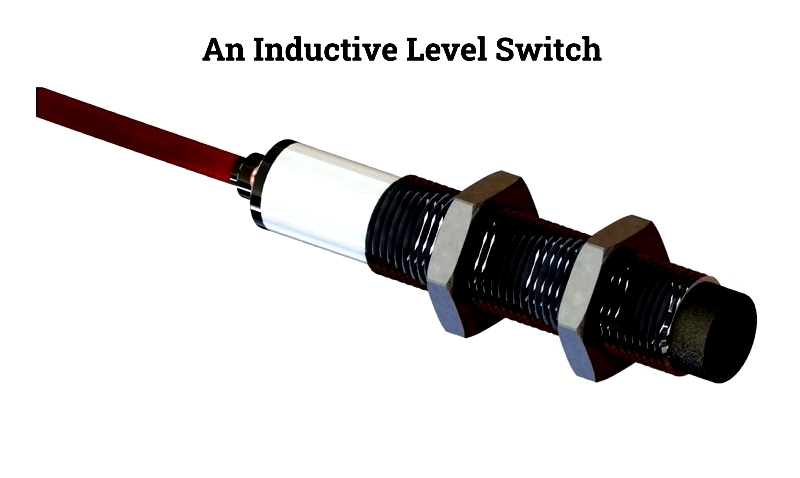
Laser Sensor
Precise non-contact measurement using light pulses. Ideal for high-value liquids and fast measurements, effective in narrow vessels.
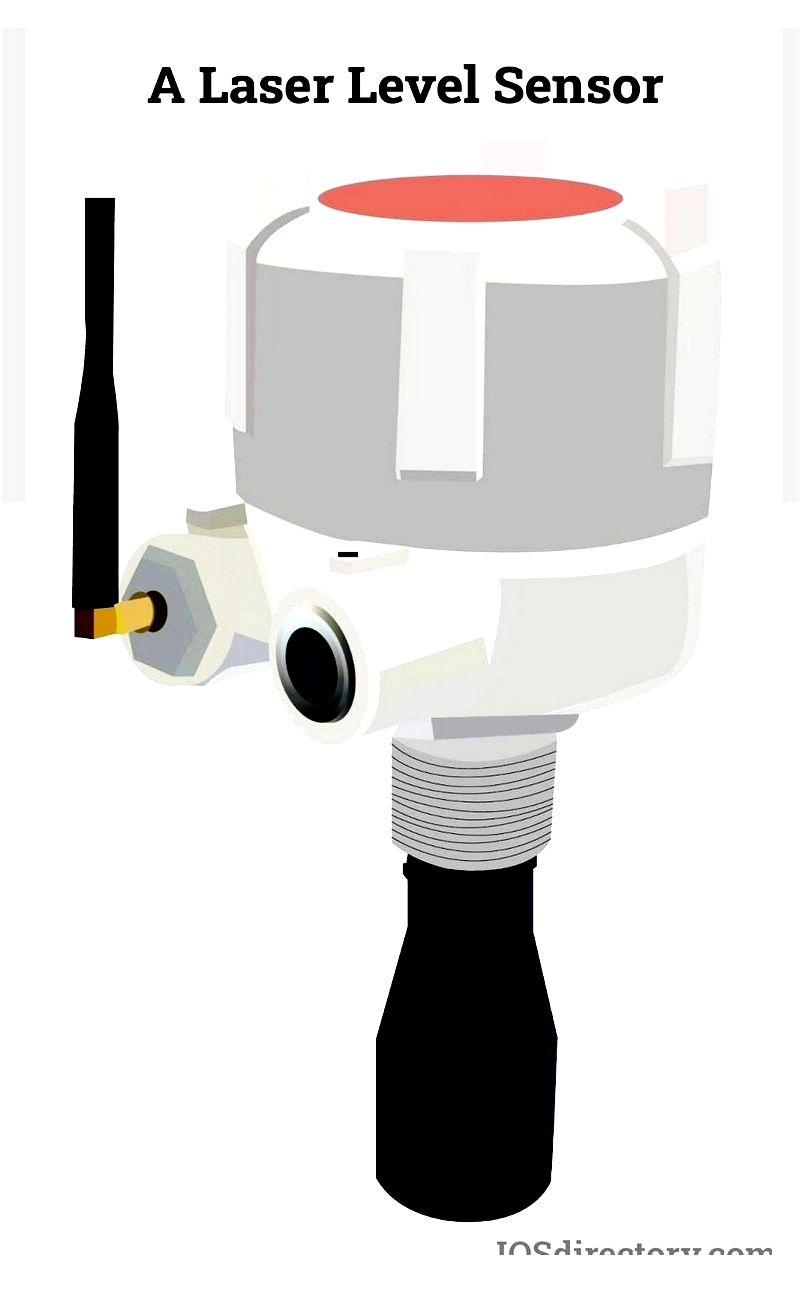
Magnetostrictive Level Switch
Measures float position via magnetostriction for precise level detection. Popular in fuel storage and chemical plants.
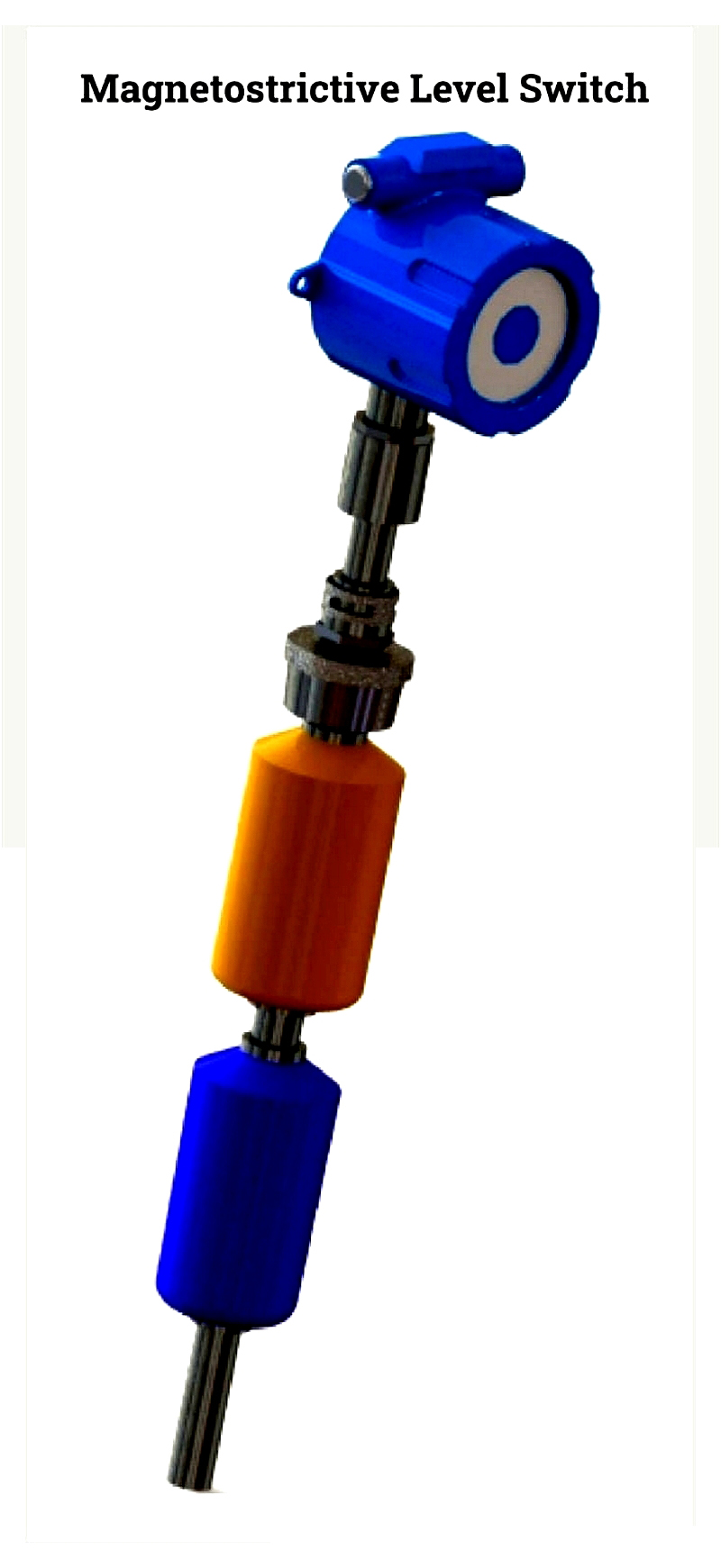
Microwave Level Switches
Non-contact radar sensors for harsh environments with aggressive chemicals or abrasives. Used in mining and chemical processing.
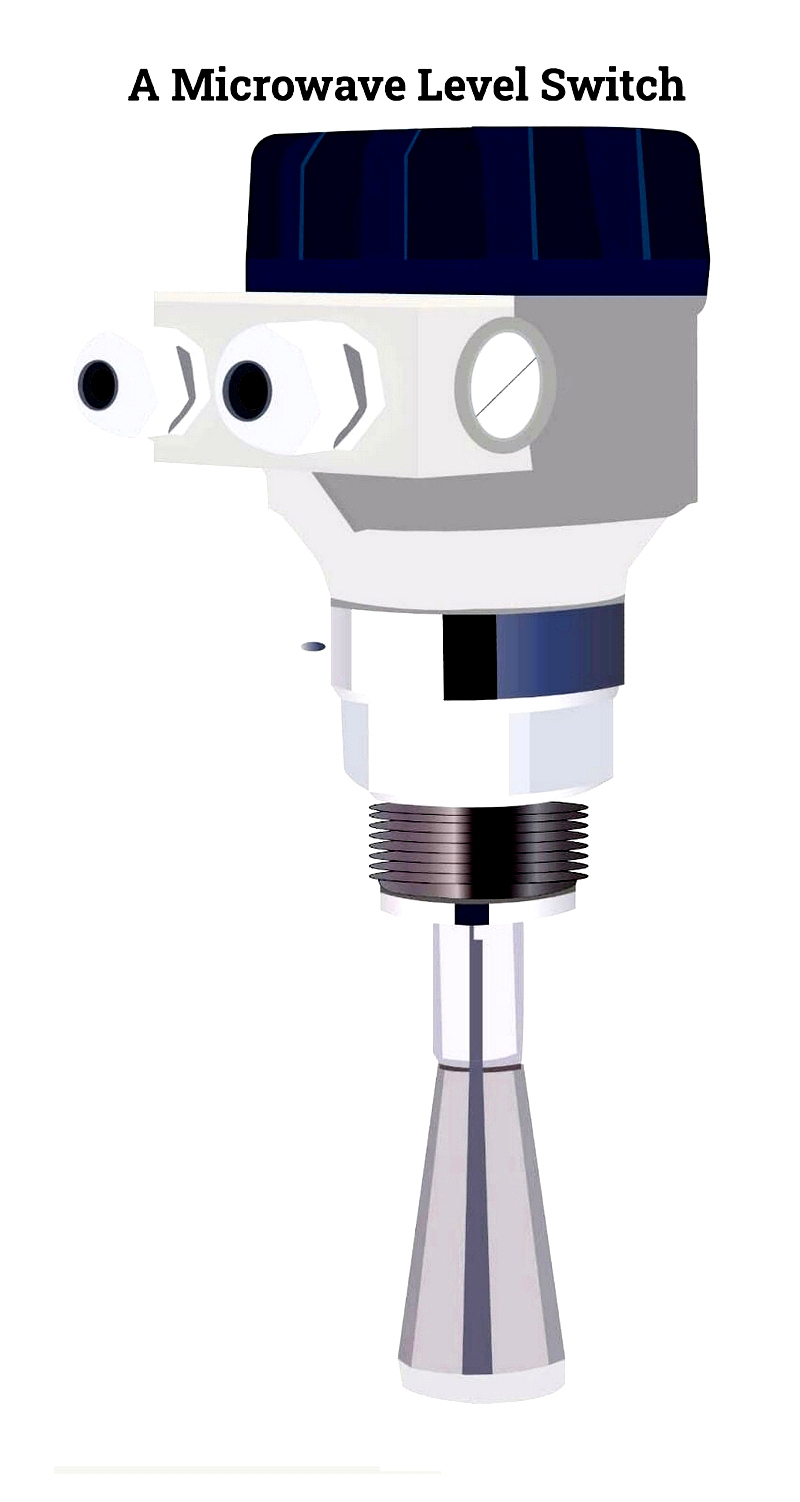
Optical Level Switch
Uses light reflection in a prism for point/continuous measurement. Maintenance-free for sanitary applications.
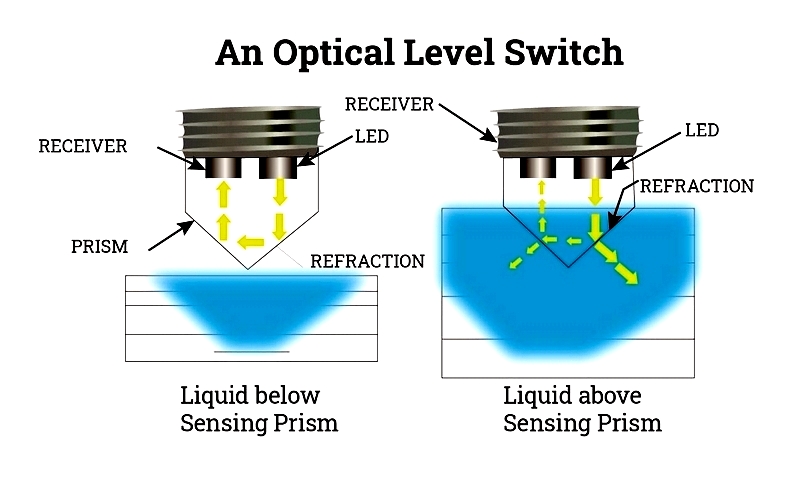
Paddle Level Switch
Rotating paddle detects bulk materials through torque changes. Reliable for dusty silos and hoppers.
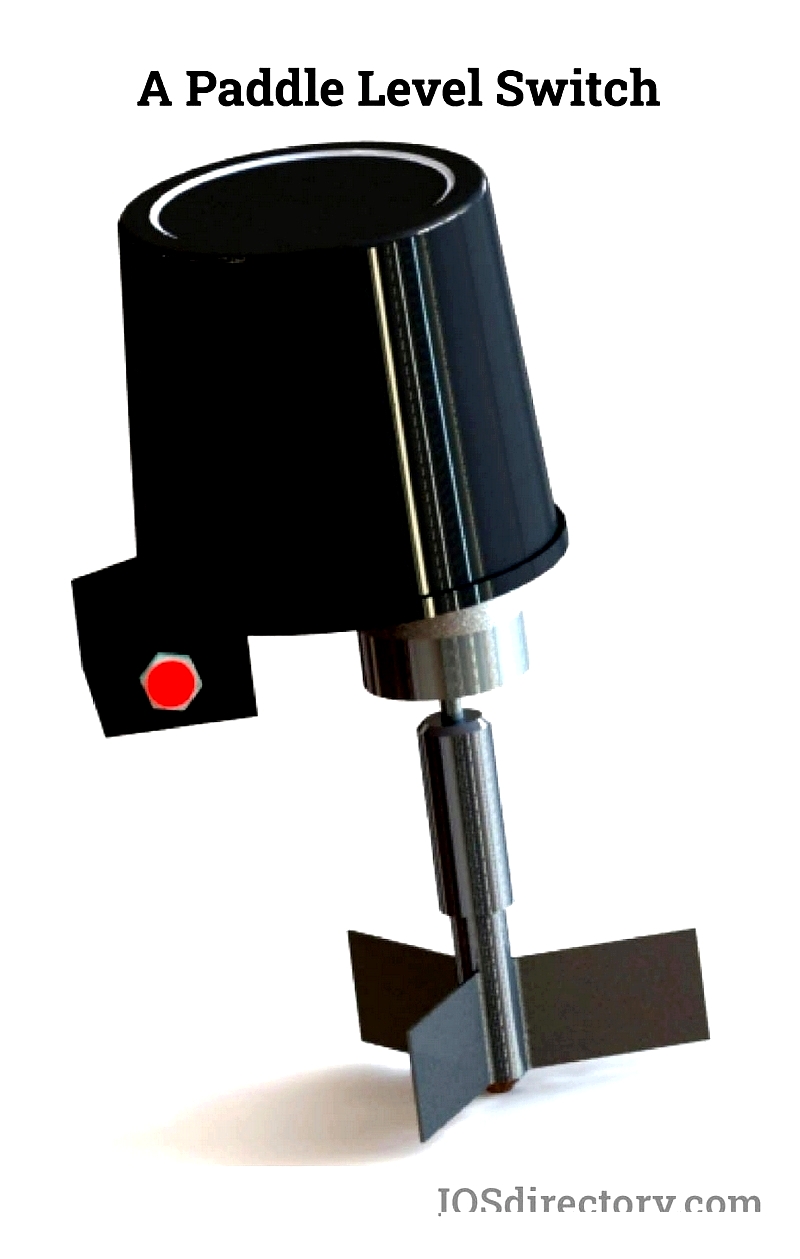
Potentiometric Level Switches
Continuous measurement in metal containers with conductive liquids. Provides high accuracy for difficult process liquids.
